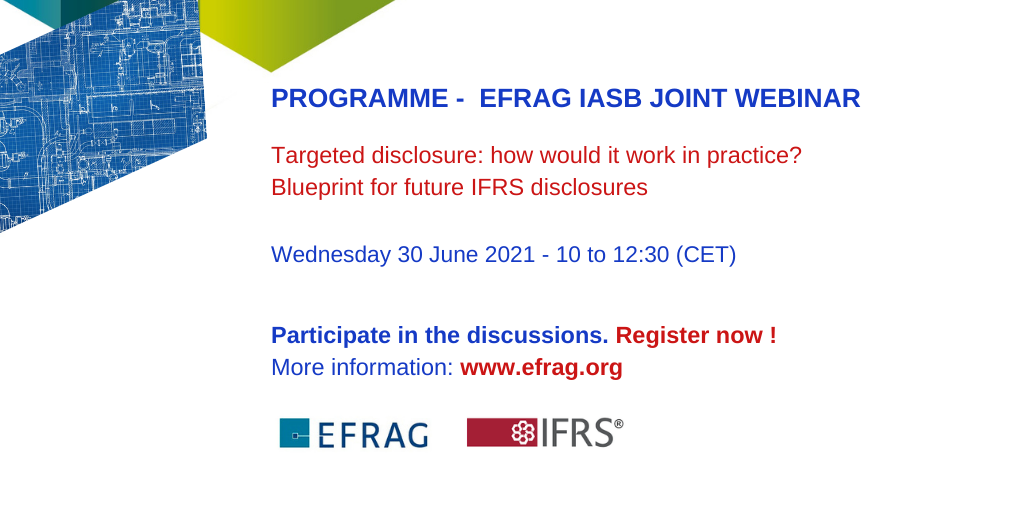PROGRAMME | EFRAG IASB Joint Webinar: Targeted disclosure: how would it work in practice? Blueprint for future IFRS disclosures | 30/06/21 10:00 to 12:30
On Wednesday 30 June, from 10:00 to 12:30 (CEST), EFRAG and the IASB will host a joint outreach event: Targeted disclosure: how would it work in practice? Blueprint for future IFRS disclosures.
Michael Fechner, EFRAG Board member, will moderate three different panel discussions. The panellists from EFRAG TEG, EFRAG TEG working groups and observers will provide the views of users, preparers, auditors, enforcers and for IAS 19, an actuary, on the topic. The panellists, EFRAG and the IASB are ready to respond on questions from the audience.
Views are sought on the following:
General approach:
- Would (detailed) disclosure objectives enable you to apply more effective judgement and provide more useful information to users?
- What implementation and application issues arise from applying judgement to meet the needs of users?
- Can a pure objective-based approach work or are minimum disclosure requirements necessary?
- Is relevant, company-specific information more important than companies providing comparable information?
- Would the proposals be auditable and enforceable?
- Would the proposed approach be costly to implement?
Proposed changes to IAS 19:
- How important is information about the cash flow effects of defined benefit plans?
- Is a sensitivity analysis for defined benefit obligations necessary?
- Should specific disclosure objectives only exist for defined benefit obligations or for other types of employee benefits (e.g., hybrid plans) as well?
Proposed changes to IFRS 13:
- Is information about material fair value measurements important, irrespective of the level of the fair value hierarchy they are in?
- Is the proposal to provide alternative fair values preferable compared to the sensitivity of the significant unobservable inputs for level 3 instruments?
- Which information should be provided to explain the significant reasons for changes in the fair value measurements?
Download the detailed programme and register now.
